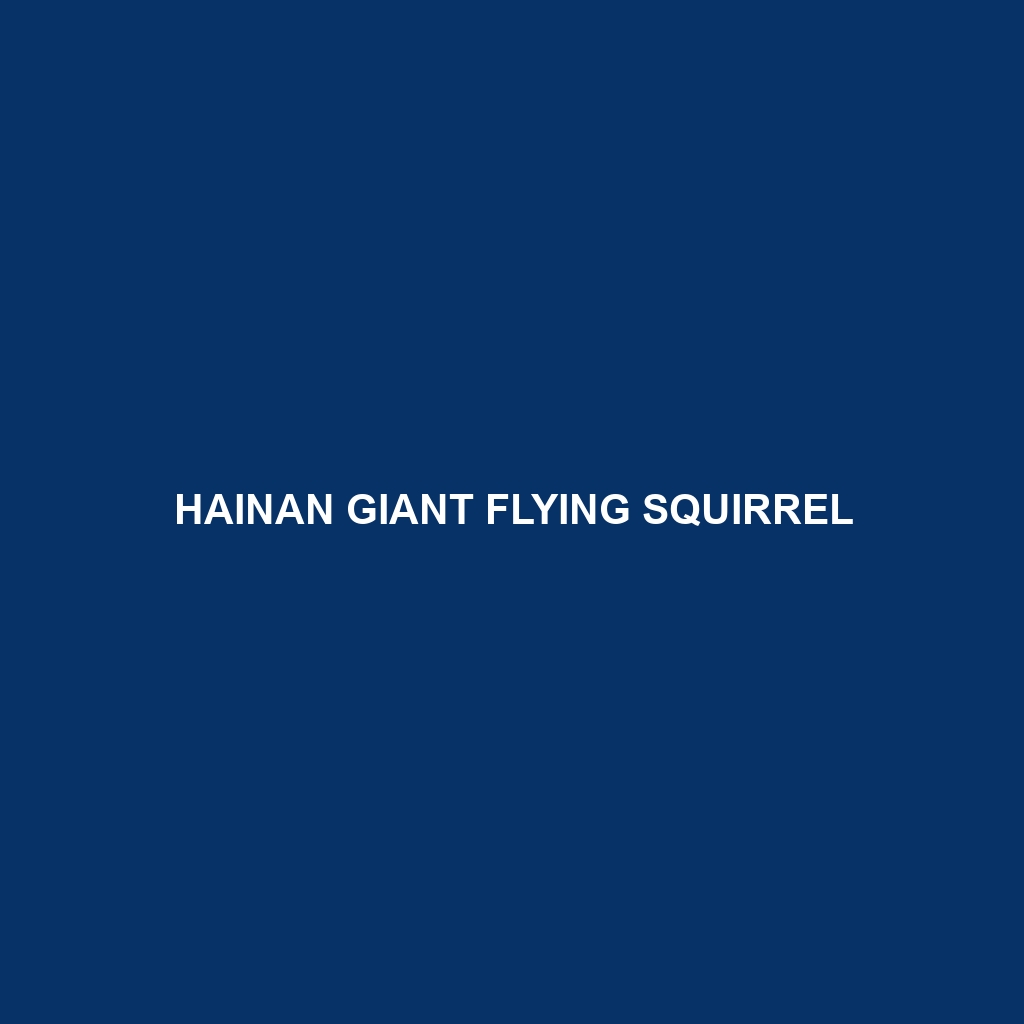Hainan Giant Flying Squirrel
Common Name: Hainan Giant Flying Squirrel
Scientific Name: Petaurista leucogenys
Habitat
The Hainan Giant Flying Squirrel is primarily found in the tropical and subtropical forests of Hainan Island, located in southern China. This species thrives in dense, humid environments and is often associated with mountainous woodlands and mixed evergreen forests at elevations ranging from 200 to 2,000 meters. The availability of large trees for nesting and ample foliage greatly contributes to their habitat preference.
Physical Characteristics
The Hainan Giant Flying Squirrel is one of the largest flying squirrels, measuring approximately 50 to 60 centimeters in body length, excluding the tail, which can add another 50 centimeters. Its fur is predominantly gray or brown, with a lighter underside, and features distinctive white patches around the eyes and ears. This species showcases broad patagium, or gliding membranes, extending from its limbs to its body, facilitating long-distance glides between trees.
Behavior
Typically nocturnal, the Hainan Giant Flying Squirrel engages in a range of social behaviors. They are known for their excellent gliding capabilities, which enable them to travel up to 100 meters between trees. These squirrels are also arboreal, spending most of their time in the canopy and are often seen foraging in groups, which enhances their survival through social interaction and vigilance against predators.
Diet
The diet of the Hainan Giant Flying Squirrel mainly consists of fruits, nuts, and leaves. They play an essential role in seed dispersal, contributing to the health of their forest ecosystem. Additionally, they may consume flower buds and other tree parts, demonstrating a varied diet that adapts according to seasonal availability.
Reproduction
The reproductive habits of the Hainan Giant Flying Squirrel typically involve breeding once a year, during the late spring. After a gestation period of about 60 to 70 days, females usually give birth to one or two offspring. The young are born with their eyes closed, relying on their mother for nourishment and protection. Notable maternal care is observed during the early stages of their development, highlighting the species’ parental investment.
Conservation Status
The Hainan Giant Flying Squirrel is currently classified as vulnerable on the IUCN Red List. The primary threats to their population include habitat loss due to logging and agricultural expansion, which significantly impacts their natural environment and food sources.
Interesting Facts
One fascinating aspect of the Hainan Giant Flying Squirrel is its ability to glide silently through forest canopies, allowing them to avoid detection from predators. Furthermore, they are capable of rotating their bodies in mid-air, enhancing their maneuverability during gliding.
Role in Ecosystem
As a vital component of their habitat, the Hainan Giant Flying Squirrel plays a crucial role in seed dispersal, influencing forest regeneration and diversity. Their foraging habits contribute to the nutritional cycle within the ecosystem, while their presence supports the food web by serving as prey for various raptors and mammals.
